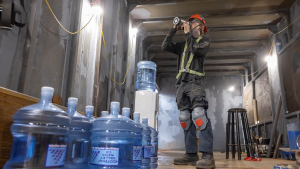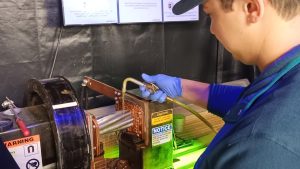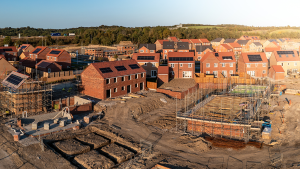A growing green trend in construction has broken ground in the Hamilton municipality of Ancaster, Ont. with the first straw-bale insulated home under construction.
The home was designed by the owner’s son architect Nicholas Koff and is being built by Guelph-based Evolve Home Builders.
"Straw bale homes are super energy-efficient, but also, (surprisingly) fire-resistant," said Ben Polly, Evolve Home Builders founder.
According to Polly, straw bale buildings can be comparable in cost to a conventionally framed structure with additional exterior sheathing insulation and brick or stucco finish.
"When Evolve is hired to provide a turnkey custom home, we have found that the designs, methods and materials selected by our clients result in final costs that range from $145 to $300 + per square foot," said Polly.
However, since exterior walls typically account for about 15 per cent of total costs of construction of a home, even if a premium is paid for bale walls, the net effect is unlikely to exceed more than three or four percent of the total budget, noted Polly. Adding to that, the performance of the bale walls will pay dividends in the form of energy savings for the entire life of the building.
Straw is also a natural, breathable material that can also be mixed with plaster to replace the drywall inside and stucco outside of homes as well.
Although this is the first straw-insulated home in Hamilton, there are between 300 and 400 such homes across the province and many more straw-insulated additions.
Evolve senior project manager, Chris Vander Hout said of the local, sustainable materials, "It’s what was done 100 years ago, so it has come, a bit, of a full circle."
Ed Wallace, Evolve site project manager, says there is plenty of curiosity in the neighbourhood, with people popping by the site to ask what the massive bales of hay are for.
Not surprising, the owners and the workers on site have heard their fair share of Three Little Pigs, "Huff and Puff and blow your house down," Wallaces jokes.
On a more serious note, the home is sustainable and generates substantially less waste than a conventional project, which are the main selling features of straw.
Polly, whose childhood home near Kemptville, Ont. was destroyed by a fire, so he has a personal connection and impression with the degree of how fire-resistant straw insulation is.
"We made it out alive, but it is obviously something that sticks with you," he said.
Straw-bale homes are warranted the same fire-resistance ratings as cement block homes, which is four times as resistant as a typical residence.
Although it is slightly more expensive to build with straw, Polly says the energy-efficiency makes up for the added cost in the long term.










Recent Comments
comments for this post are closed